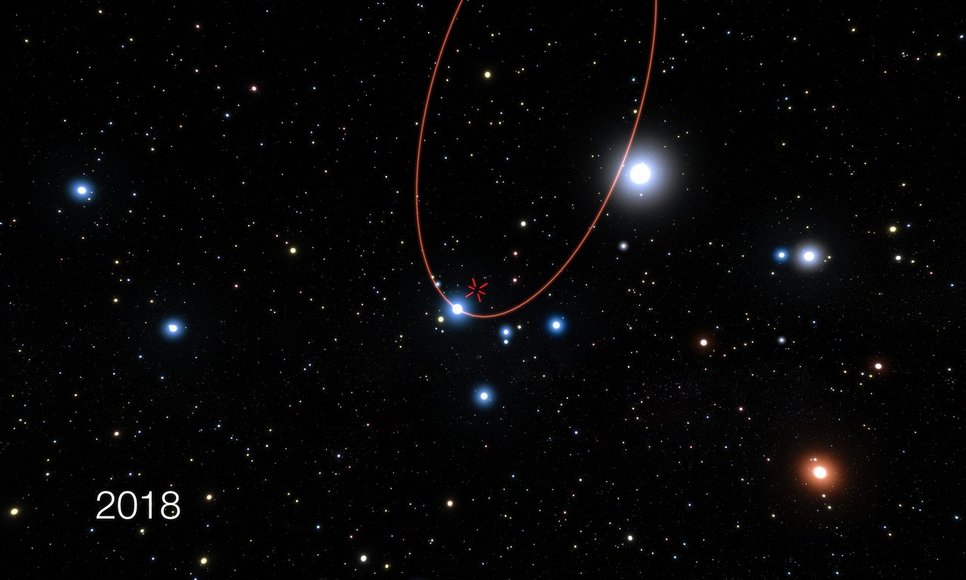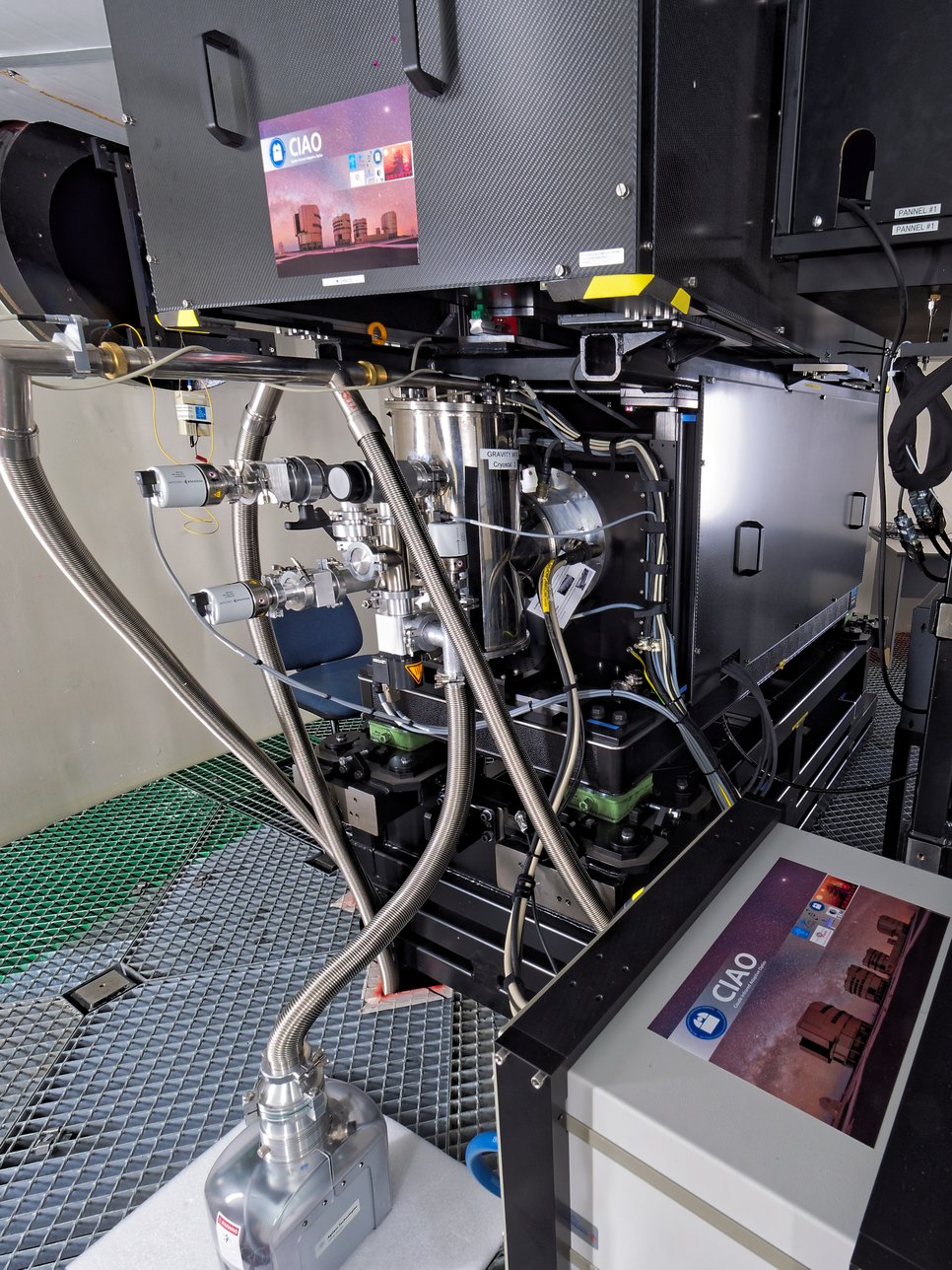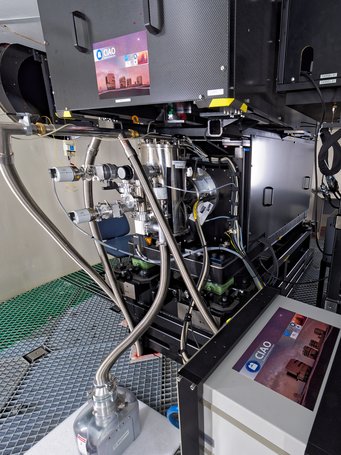Successful first galactic center observation with new instrument GRAVITY targets stars around black hole
Another first for the new instrument GRAVITY: Observations of the direct neighborhood of our galaxy's central black hole in unprecedented detail show GRAVITY living up to its promises. The instrument made these observations by combining light from all four 8 meter telescopes that comprise ESO's Very Large Telescope into a virtual telescope with the same eye for detail as a 130 m telescope.

Telescope size is severely limited by current technology. At least for the increase in resolution – the ability to discern smallest details – that comes with increased telescope size, interferometry provides a feasible alternative. Interferometric instruments combine the light of several telescopes to yield the same resolution as a much larger single telescope.
The main task of the GRAVITY instrument, newly installed at ESO's Very Large Telescope (VLT) with "first light" this January, will be the study of stars orbiting our galaxy's central black hole: a supermassive black hole with four million solar masses. In 2018, one of these stars will pass sufficiently close to the black hole to allow for a test of Einstein's theory of general relativity, which makes concrete predictions for motion near a black hole. The precision required for this test can only be reached with a telescope 130 m in diameter – or, equivalently with GRAVITY's ability to transform the four 8 m unit telescopes of the VLT into the equivalent of such a telescope.
The recent tests, which targeted the star S2 which is headed for the close encounter, show that the researchers under the direction of the Max Planck Institute for Extraterrestrial Physics (MPE) in Garching are ready and up to the challenge for 2018.

Wolfgang Brandner of the Max Planck Institute for Astronomy (MPIA) in Heidelberg adds: "The successful test sets the stage for the last component of GRAVITY still to be installed: the near-infrared adaptive optics system CIAO, which will increase the sensitivity of GRAVITY by a factor between 50 and 100, allowing for the reliable observation of faint objects." The main components of the four CIAO systems were constructed at MPIA; two are currently undergoing testing on site at the VLT, while the other two await shipping to Chile at the end of July. Adaptive Optics systems can counteract image degradation caused by turbulences in the Earth's atmosphere.
CIAO is designed to use the light from ordinary stars at infrared wavelengths to obtain real-time information about atmospheric disturbances. This facilitates observations of deeply embedded regions like the Galactic Center, where visual starlight is obscured by intervening clouds of dust and the best reference stars would be invisible to the VLT's standard adaptive optics system, which uses visible light.
MPIA researchers plan to use GRAVITY for the study of planet formation around very young stars (Young Stellar Objects, YSOs), where the instrument's unparalleled resolution will reveal details of the gaseous disks surrounding such stars. The instrument should even be able to reveal planet formation in the inner regions of planetary systems – what in our own Solar System would be the realm of terrestrial planets such as our own Earth. In addition, GRAVITY will be able to trace the matter flows on and away from such very young stars.

